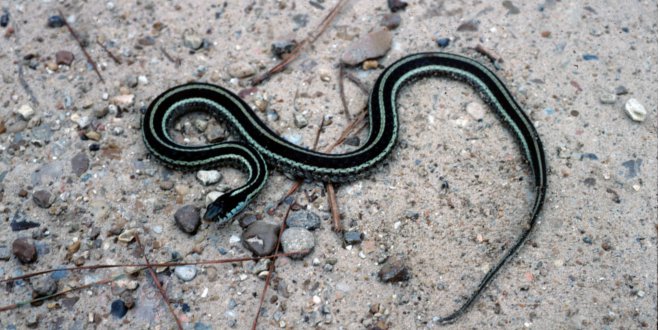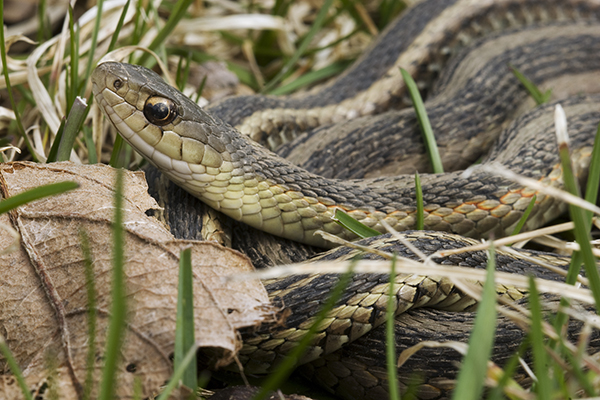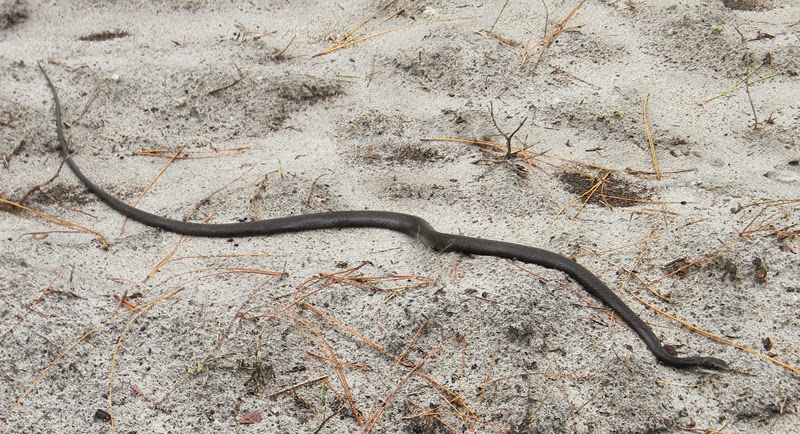Snakes
Snakes are legless reptile related to crocodiles and lizard. Their bodies are covered with scales and they can swallow other living things much bigger than their head.
Most snakes are timid creatures and they tend to avoid contact with human. They will only attack if cornered or provoked, in most instances, they attack as a form of defence.
However, there are also occurrences of snakes found in building compound and if you do come across one, it is highly recommended to contact the Fire or Wildlife Department for assistance.
Signs of snakes
Snakes are less common compared to other pest species in Indonesia, however they can potentially harm public when provoked. They typically found near garden, secluded open land, bush area or un-trimmed long grass.
The common signs to look out for on whether a snake is in your property are:
Shed skins — snakes shed their worn-out skin about 6 times a year. This process is called moulting.
Winding trails — can be seen on light dirt or sandy surfaces, particularly across secluded open land areas.

Ways to Keep Snakes Away from Your Home and Yard
Snakes are fearsome and frightening creatures. They’re so frightening, that science claims that Ophidiophobia – or the fear of snakes – is one of the most common phobias around.
While one might think they’re safe from snakes because they live in urban areas, there are still some instances of snake sightings in Indonesia. Some have even recorded incidents of large snakes slithering inside housing units or coming out from the toilet bowls!
Keep the rodents away
Rats are one of the major food sources for snakes, so make sure you don’t have any in your home garden. Thanks to the snake’s hinged jaws, they are natural predators of mice, rats and other kinds of rodents. Snakes use their tongue to “sniff” out and track prey, so catching the scent of a rodent inside your home might lead them there.
Keep grass short and trimmed
If you have an outdoor or garden area, always make sure to keep the grass short as this will discourage snakes from crawling about near your house. Snakes often use tall grass to avoid being seen by predators like large birds and stray cats or dogs. And since snakes are cold-blooded, they use the shade from shrubs as a resting place to stay cool when the sun is out, which is a good reason to avoid letting grass grow tall enough to be used as snake cover
Seal up cracks
Cracks and crevices are also an opportunity for snakes to enter homes. Since snakes have flexible bodies, they can easily fit themselves through even the flattest crevice without anyone noticing and might even use these cracks as their entry point.

Snakes In and Around the House
Snakes are generally shy animals who want nothing to do with people. They can be beneficial because they eat mice, slugs, grubs, insects, and other pests and they can be food for other wildlife such as hawks. Although most species of snakes in North America are harmless, there are some venomous species that can pose risks to people and pets. The National Pesticide Information Center collected the resources below to help you find ways to keep snakes away without posing unnecessary risks to you, your family, pets, or the environment.
Snake Identification
Because some snakes can be dangerous, don’t handle any snake if you are not absolutely sure what type it is. If you don’t know what type of snake you are dealing with, treat the snake as if it might be venomous. Don’t handle it and keep children and pets away. Snakes are most likely to bite when harassed. Consider taking a photograph of the snake if possible to aid in identification. There are many resources available to help you identify a snake, including your local cooperative extension office, and state wildlife agency. You can also look up the snake in a field guide, or search the internet for information on snakes in your area.
Snakes
Identify the type of snake(s) before choosing a treatment strategy.
Be cautious when moving trapped snakes. Snakes are more likely to bite when harassed.
Control rodent populations to help prevent snakes from entering your property.
Clean up piles of wood, trash, metal, and other debris to reduce snake habitat.
Cut shrubs away from the home, keep grass short, and manage weeds to reduce hiding areas.
Secure all door sweeps and window screens to reduce entry points to the home.
Check potential entryways into attics and basements. Seal holes larger than 1/4 inch and use galvanized screening to cover vents and drains.
Create a kid-safe zone using a snake proof fence in areas with many venomous snakes.

HOW TO HELP PREVENT SNAKES ON YOUR PROPERTY
In general, snakes get a bad rap. These slithering reptiles are an important part of their ecosystems, as they help keep other pests at bay. In addition, snakes don’t start their mornings thinking, “It sure would be fun to creep out some humans today.” In fact, they’re often likely to hide if they sense you coming
That being said, if you’re like most people, you probably prefer that your yard and garden be free of snakes. And we honestly can’t say we blame you. Especially if you live in an area of the country in which venomous snakes are common. So take a look at the following five tips for keeping snakes off your property
Keep your yard clear of clutter.
Snakes like clutter for a couple of reasons. First, it gives them a good spot to hide from predators. Second, snakes are reptiles, which means they need warmth to survive. Clutter like compost piles or stacks of wood can make a nice, cozy den that protects snakes from the elements. Look for alternatives that are less attractive to snakes
Cut Your Grass
You’ve heard the expression “a snake in the grass?” Well, there’s a reason that came about. Snakes like tall grass. It’s where their prey lives. It provides the perfect cover for hunting, and also keeps them protected from predators. Keep your grass trimmed, and snakes will be more likely to look for areas in which they’re not as exposed.
Learn about the snakes in your neck of the woods
Reading up on the snakes that are local to your region gives you a better idea of what their habitat is. Once you understand what conditions create the ideal environment for different snake species, you can purge your yard of the elements that make it a snake haven

Snakes are natural pest control
Snakes are natural pest control!
As a top-end predator, snakes are essential balancing agents in your garden, yard or farm. Rather than killing them, we should deliberately create habitat.
It’s truly incredible to me that many folks – even country folk that should know better – will kill the snakes in their yard.
Here’s why you shouldn’t. If you have ever complained about:
1. Rats
2. Mice
3. Cockroaches
4. Squirrels
5. Berry-eating birds
6. Frogs
…then you should hope you have snakes! Think about it this way: which do you prefer? 1 snake or 200 rodents
C’mon, don’t be a wuss. Seriously. Unless you have rattlesnakes around your property, you’re probably going to be fine. Their favorite place to live is generally gopher tortoise burrows. What you want is to leave space for good guys like rat snakes, black racers, garter snakes, ring necks, king snakes, etc. They’ll manage your pest control, plus add some slithery beauty to your homestead.